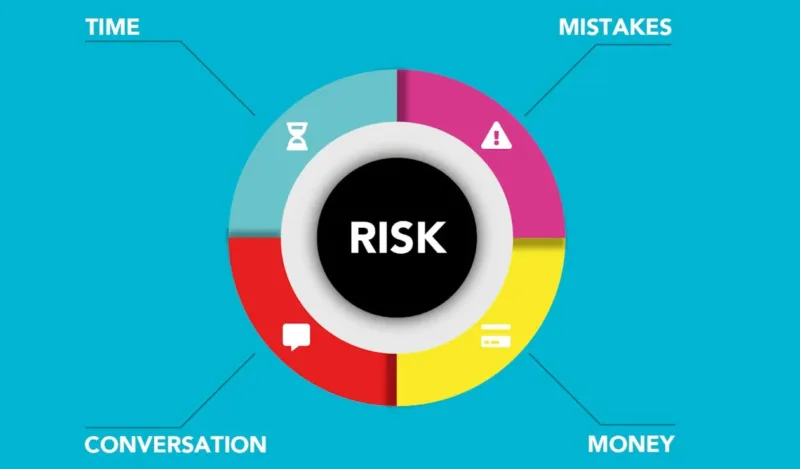
If you’ve ever dabbled in investing or followed the financial markets, you’ve likely heard whispers about broker churning. Churning is when a broker engages in excessive trading in a customer’s account primarily to generate commissions rather than benefit the investor’s financial goals. This practice violates ethical standards and eats into potential returns, making it a topic worth your attention.
As an investor, your primary focus should be aligning your investments with your financial objectives. Unfortunately, some brokers exploit their control over an account to prioritize their gain over yours. Understanding and identifying the signs of churning can safeguard your capital and ensure that your investment strategy remains sound and beneficial. When you know what to look for, you can steer clear of brokers whose actions might derail your journey toward economic growth.
So, what can you do to protect yourself and maximize your returns? Learning to detect and prevent churning tactics is vital. By staying informed and vigilant, you can foster a trusting relationship with your broker and make the most of your investing efforts. Here, we’ll explore how to pinpoint these unethical practices and ensure your investments work for you and not just for your broker’s commissions.

Broker churning involves excessive trading in a client’s investment account to generate commissions. This practice is illegal and unethical, leading to potential financial losses and legal consequences for the broker and the client.
Churning is excessive and unnecessary trading by a broker in a client’s account, primarily to earn more commissions.
Brokers may conduct frequent trades that do not align with the client’s investment goals, resulting in high turnover ratios and increased transaction costs. These practices violate ethical standards and can be classified as securities fraud.
A primary indicator of churning is when trades are made for the broker’s profit rather than the client’s benefit. This misconduct often involves complex strategies and frequent trading of stocks, bonds, mutual funds, and other securities.
The impact of broker churning is significant and multifaceted:
Clients might notice an unusually high turnover ratio in their accounts, a red flag for churning. The loss of trust can extend beyond individual relationships, impacting the broader perception of the financial industry.
Broker churning is regulated by the Securities and Exchange Commission (SEC) and the Financial Industry Regulatory Authority (FINRA).
SEC Rule 15c1-7 specifically addresses churning, describing it as a manipulative and deceptive device that is illegal under U.S. securities law. These regulatory bodies enforce strict penalties on brokers found guilty of churning, including fines and sanctions.
Clients have the right to take legal action against brokers for churning. They can seek remedies such as reimbursement for losses and damages. Regulatory agencies work to ensure transparent practices and hold brokers accountable through regular audits and enforcement actions.
See Related: How To Earn $100 Of Passive Income With Dividend Stocks

Finding the right broker for ethical investing means looking for those who prioritize environmental sustainability and transparency while providing solid financial guidance. The broker’s ethical standards and commitment to avoiding conflicts of interest should inform your decision-making.
When evaluating brokers, consider their adherence to ethical standards and transparency. Look for brokers who communicate their fee structures, whether commission-based or fee-based. This transparency helps in understanding any potential conflicts of interest.
Integrity and trust are non-negotiable. Investigate whether the broker prioritizes environmental and social governance (ESG) criteria in their investment strategies. Ensure they have a proven track record in avoiding investments in companies violating human rights or environmental laws.
Communication is crucial. Opt for brokers who provide detailed reports and regular updates on your investments. This lets you stay informed about where your money is going and how it aligns with your ethical investment goals.
Comparing brokerage firms can be daunting. Start by making a list of brokers known for ethical practices, such as [Broker A], [Broker B], and [Broker C]. Each has unique strengths that might align differently with your investment goals.
Consider fee structures. Some brokers offer wrap accounts with all-inclusive fees, while others operate on a commission-based model. Compare these to understand which offers the best value without hidden charges.
Investment options are another key point. Brokers who provide access to a wide range of ethical securities, including alternative energies and green materials, are preferable. Seek out firms that actively screen and exclude companies failing to meet ethical standards. This approach ensures your investments align with your values.
Using these criteria, you can make an informed decision tailored to your ethical investing strategy.

Navigating a broker churning strategy can be complex, so developing a thoughtful plan is crucial, as selecting appropriate investment options and consistently monitoring your portfolio.
Begin by mapping out your investment goals. Are you aiming for short-term gains or long-term security? Clarifying these goals will help inform your strategy. Work closely with a financial advisor or planner who understands your needs. They’ll help you assess your risk tolerance and frame an investment roadmap.
Budgeting for your investments is key. Determine how much capital you’re willing to allocate to your investment account. Investments should align with your financial capacity without compromising your daily living expenses. Utilize financial management tools to track all expenditures and returns.
Selecting the right assets is pivotal. You’ll encounter stocks, bonds, mutual funds, annuities, and options, each with distinct risk levels and potential returns. Mutual funds offer diversification, making them a safer bet for newcomers. In contrast, stocks might provide higher returns but with increased volatility.
Liquidity is another crucial factor. Can you quickly convert your investments to cash if necessary? Highly liquid assets are ideal for those needing swift access to funds. Consider diversifying your portfolio across various investment products to balance potential gains and risks.
It is essential that the chosen investments suit your financial goals and risk appetite. A seasoned financial advisor can recommend instruments that perfectly fit your strategy.
Regularly monitoring your portfolio is non-negotiable. Keep a close eye on your account statements to spot irregularities or red flags. Analyzing trading activity helps ensure that your broker acts in your best interests, not their commission earnings.
Track short-term price fluctuations but remain focused on long-term trends. Too much attention to short-term changes can lead to hasty decisions. Utilize portfolio management tools to get real-time insights and analytics on your holdings.
Schedule periodic reviews with your financial advisor to discuss portfolio gains or losses and refine your strategy. Being proactive in your investment strategy will help mitigate risks and optimize returns.
See Related: How to Become a Part-Time Mortgage Broker

Understanding incentive structures and avoiding common pitfalls is crucial to making the most out of broker-churning strategies. Avoiding the traps while capitalizing on the incentives can increase your profits substantially.
Knowing the different types of incentives brokers offer is vital. Commission-based accounts often have high commission rates, but understanding when and how these apply can help mitigate costs. Financial advisors might push for trading A shares due to enticing commission rates, thus inflating your trading costs.
Seek out bonuses and incentives. Some brokers provide fantastic offers for transfers or opening new accounts. These include cash bonuses, free trades, or lower trading fees. Pay close attention to the terms and conditions of these offers, such as minimum deposit amounts or trading volume requirements.
Be mindful of conflict of interest scenarios. An advisor might engage in unauthorized trading to gain short-term bonuses, ultimately working against your long-term interests. Always monitor your account statements and activity.
A big risk in broker churning is falling into the trap of reverse churning. This happens when brokers under-trade in fee-based accounts, providing little value while raising fees. To avoid this, track your brokerage activities regularly and compare the fees you’re paying with the services you’re receiving.
Beware of short-term gains leading to long-term losses. Chasing immediate incentives might result in higher costs or missed long-term growth opportunities. Focus on strategies that balance quick profits with sustaining long-term value.
Unauthorized trading and legal consequences are significant risks. Ensure all trading activities are authorized and in line with your risk tolerance. Unauthorized trades erode trust, leading to costly legal battles and financial losses. Regularly updating and communicating your trading preferences helps mitigate this risk.
By acknowledging and actively avoiding these pitfalls, you can make the most of your broker churning strategy and maximize your returns effectively.
See Related: The Road to Financial Independence: Smart Investments and Effective Sales Techniques

When considering a broker-churning strategy, weighing potential financial losses against the expected benefits is crucial. Understanding the costs of this strategy, including fees and tax implications, can help you make an informed decision.
Assessing the risks associated with broker churning involves looking at multiple factors.
This strategy often involves high-frequency trading, which can lead to significant losses if not carefully managed. The liquidity of the assets plays a critical role, as low liquidity can exacerbate market volatility. Engaging in frequent trades exposes you more to short-term market fluctuations, increasing your risk of financial loss.
Consider the risk assessment carefully. Weigh the potential gains against the possibility of investment losses in a volatile market. An inadequate understanding of these risks can erode your investments over time.
The costs associated with broker churning can be substantial.
Every trade incurs a commission rate, and these transaction costs add up quickly with high-frequency trading. Additionally, brokers may charge a fee based on the cost-to-equity ratio, meaning the more you trade, the higher your expenses will be. These trading costs can significantly impact your profit margins.
Understanding these fees upfront is key. Always ask your broker for a detailed breakdown of all potential costs associated with their trading strategy. Hidden fees and high commissions could erode any potential gains.
Tax implications are another critical consideration.
Frequent trading can lead to a higher tax liability because short-term gains are often taxed at a higher rate than long-term investments. This can unexpectedly eat into your profits. Keeping track of these transactions and their tax impacts can be cumbersome and may require professional advice to navigate efficiently.
Consult with a tax advisor to understand how these taxes will affect your investment strategy. Mismanaging tax liabilities can lead to financial losses that could have been avoided with better planning. Regularly reviewing your tax situation can help you stay ahead of any potential issues.
In sum, paying careful attention to investment risks, costs, and tax implications will help you navigate the potential pitfalls of broker churning.
See Related: Unlocking Wealth: Cheap Assets to Buy That Could Yield Massive Returns

Several notorious cases of broker churning have left investors with severe financial losses. Let’s examine some detailed case studies and analyze past churning incidents to better understand the consequences of this illegal practice.
Bernie Madoff – One of the most infamous cases, Bernie Madoff’s Ponzi scheme, also involved churning elements. He manipulated thousands of investors, resulting in billions of dollars in losses. The sheer scale of his fraudulent activities highlights the devastating impact churning can have when combined with other schemes.
D.B. Cooper Wealth Management – This firm was sanctioned heavily when evidence of broker misconduct surfaced. Financial advisors at the firm executed numerous unnecessary trades in customer accounts, costing investors significant fees. The brokers involved faced legal consequences, including bans from trading and heavy fines.
Analyzing these real-life cases reveals several key points investors should know. First, warning signs include unusually high trading volumes and statements with frequent transactions that lack clear investment objectives.
In the Bernie Madoff case, the failure to scrutinize suspiciously consistent returns could have tipped off investors to underlying fraud and churning. In D.B. Cooper Wealth Management’s scenario, the brokerage firm’s lack of oversight allowed financial advisors to exploit clients’ accounts for personal gain. This underscores the importance of vigilant internal controls.
Legal consequences for churning are severe. Brokers may face sanctions, lifetime bans, and hefty fines. Investors often resort to arbitration or seek the help of securities lawyers to recover damages. These remedies, while sometimes slow, can provide significant relief.
Recognizing the patterns and signs of churning can help protect your investments. Engage regularly with your financial advisor, scrutinize your trading statements, and ask questions about every transaction. Staying informed and proactive is your best defense against broker misconduct.

Specific tools and resources can be invaluable when navigating the complexities of broker churning and defending against it. It’s essential to equip yourself with the right financial planning tools, educational materials, and regulatory resources.
Having the right tools can help you manage your investments effectively. Financial planning apps, like Mint or Personal Capital, provide comprehensive views of your investment portfolios. These apps also help you track trading activities, which could alert you to excessive transactions indicative of churning.
Market analysis tools such as Bloomberg Terminal or Yahoo Finance offer insights into investment patterns and broker behavior. By analyzing data trends, you can spot unusual trading activity. Regularly using these tools enables you to maintain control over your investment strategies.
Educational resources are crucial for any investor looking to avoid the pitfalls of broker churning. Websites like Investopedia offer articles and tutorials on recognizing unethical trading practices. They provide step-by-step guides on how to monitor your accounts for signs of churning.
Various online courses from platforms like Coursera or edX focus on financial literacy and investment strategies. They help you understand the intricacies of the financial markets and make informed decisions. Books like Benjamin Graham’s The Intelligent Investor also furnish timeless advice on managing your investments responsibly.
It’s important to be familiar with the regulatory bodies that govern broker activities. The Financial Industry Regulatory Authority (FINRA) and the Securities and Exchange Commission (SEC) provide guidelines and resources for investors and offer public databases to check brokers’ disciplinary histories.
If you suspect broker churning, legal resources are available. Contacting an investment fraud attorney can help you review and assess your account for potential wrongdoing. They can guide you on the steps to take for recourse and to recover any losses. Leveraging these regulatory resources ensures you stay informed about your rights as an investor.
Last updated: October 15, 2024